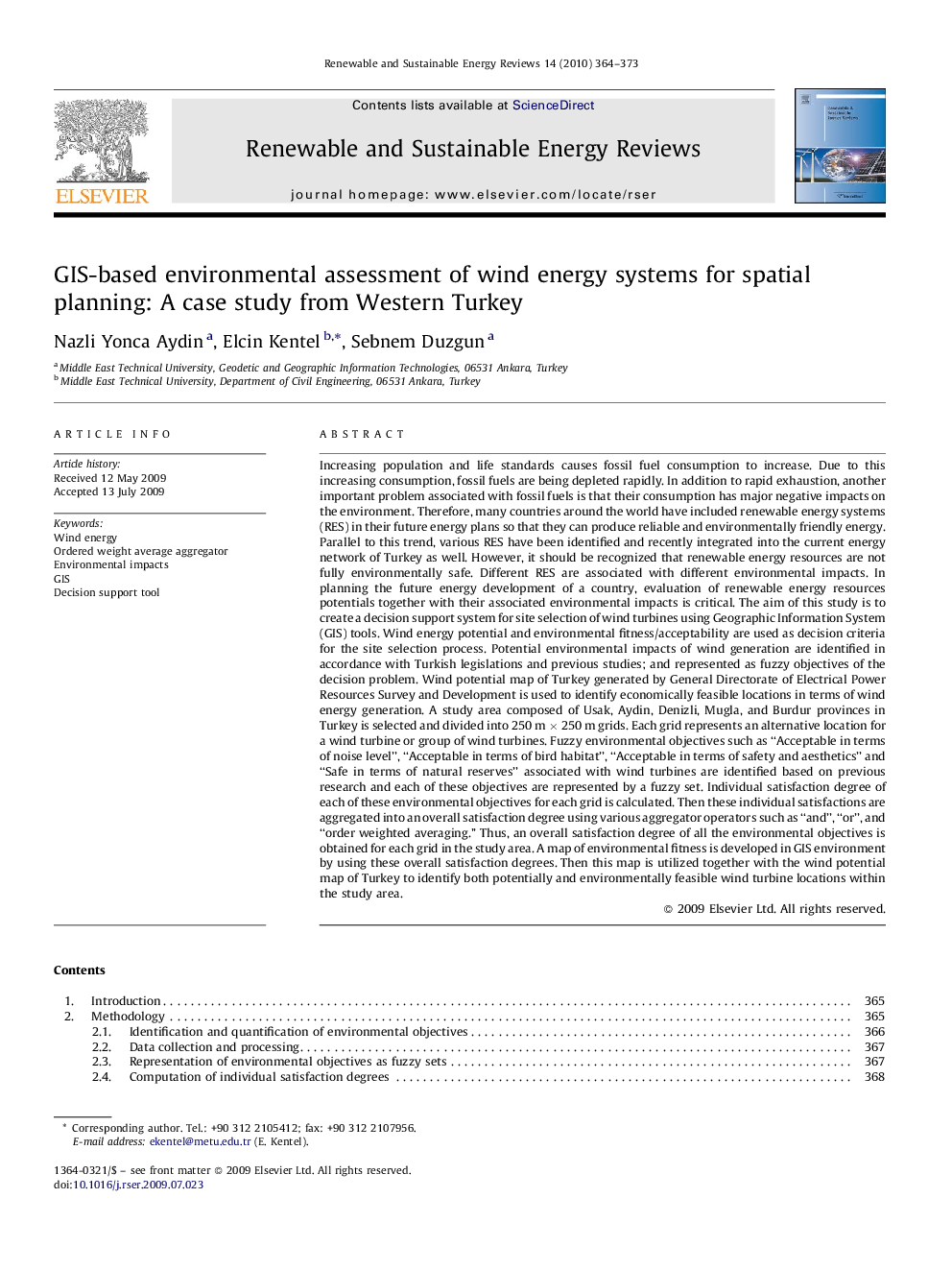| کد مقاله | کد نشریه | سال انتشار | مقاله انگلیسی | نسخه تمام متن |
|---|---|---|---|---|
| 1751911 | 1018427 | 2010 | 10 صفحه PDF | دانلود رایگان |

Increasing population and life standards causes fossil fuel consumption to increase. Due to this increasing consumption, fossil fuels are being depleted rapidly. In addition to rapid exhaustion, another important problem associated with fossil fuels is that their consumption has major negative impacts on the environment. Therefore, many countries around the world have included renewable energy systems (RES) in their future energy plans so that they can produce reliable and environmentally friendly energy. Parallel to this trend, various RES have been identified and recently integrated into the current energy network of Turkey as well. However, it should be recognized that renewable energy resources are not fully environmentally safe. Different RES are associated with different environmental impacts. In planning the future energy development of a country, evaluation of renewable energy resources potentials together with their associated environmental impacts is critical. The aim of this study is to create a decision support system for site selection of wind turbines using Geographic Information System (GIS) tools. Wind energy potential and environmental fitness/acceptability are used as decision criteria for the site selection process. Potential environmental impacts of wind generation are identified in accordance with Turkish legislations and previous studies; and represented as fuzzy objectives of the decision problem. Wind potential map of Turkey generated by General Directorate of Electrical Power Resources Survey and Development is used to identify economically feasible locations in terms of wind energy generation. A study area composed of Usak, Aydin, Denizli, Mugla, and Burdur provinces in Turkey is selected and divided into 250 m × 250 m grids. Each grid represents an alternative location for a wind turbine or group of wind turbines. Fuzzy environmental objectives such as “Acceptable in terms of noise level”, “Acceptable in terms of bird habitat”, “Acceptable in terms of safety and aesthetics” and “Safe in terms of natural reserves” associated with wind turbines are identified based on previous research and each of these objectives are represented by a fuzzy set. Individual satisfaction degree of each of these environmental objectives for each grid is calculated. Then these individual satisfactions are aggregated into an overall satisfaction degree using various aggregator operators such as “and”, “or”, and “order weighted averaging.” Thus, an overall satisfaction degree of all the environmental objectives is obtained for each grid in the study area. A map of environmental fitness is developed in GIS environment by using these overall satisfaction degrees. Then this map is utilized together with the wind potential map of Turkey to identify both potentially and environmentally feasible wind turbine locations within the study area.
Journal: Renewable and Sustainable Energy Reviews - Volume 14, Issue 1, January 2010, Pages 364–373